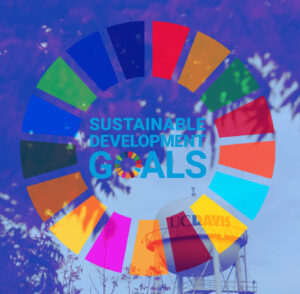In this 6:57 video, Paulo explains how advocating for the impact of international education, demonstrating potential, and ensuring financial sustainability can secure the necessary resources and support for international education. To fully harness the potential of international education, institutions must prioritize strategic budgeting and resource allocation.
From a podcast interview with Paulo Zagalo-Melo, Western Michigan University’s Associate Provost for Global Education, with 30 years of experience in international education.
“We have to internally show that we are everywhere, that what we do impacts most, if not everything, that the university is doing or could impact if embedded into those activities or those programs.”
Introduction
In today’s globalized world, international education plays a crucial role in shaping the future of universities and preparing students for success in a diverse and interconnected society. However, institutions must prioritize strategic budgeting and resource allocation to fully harness international education’s potential. This article explores the importance of strategic budgeting in the context of international education, drawing insights from a conversation with Paulo Zagalo Melo, an expert with over 30 years of experience in the field.
The Case for Strategic Budgeting
According to Paulo Zagalo Melo, strategic budgeting is essential for international education to thrive within an institution. He emphasizes the need to constantly advocate for the impact of international education and demonstrate how it aligns with the university’s overall mission. By showcasing how international education permeates every aspect of the institution, advocates can garner support and resources internally.
“Yes, we have to internally show that we are everywhere, that what we do impacts most, if not everything, that the university is doing or could impact if embedded into those activities and programs and so forth. That’s really how you make the case – to show that we’re just delivering something that is essential to everything we do.”
To effectively advocate for international education, finding champions within the institution who can support and amplify the message is crucial. However, Paulo emphasizes that international education professionals themselves must also take on the role of champions. By demonstrating the value and impact of their work, they can secure the necessary support and resources.
Lessons from Strategic Budgeting
Drawing from his extensive experience, Paulo shares valuable lessons for those seeking to navigate the complexities of strategic budgeting in international education. He emphasizes the importance of taking action and showcasing the potential of initiatives, even if they are not perfect from the start. Just as the pioneers of aviation had to demonstrate that their contraptions could fly, international education professionals must show that their programs and initiatives have the potential to succeed.
“We have to show that this works, this global learning program, this COIL program, you have to sometimes set up initiatives that are not perfect to start with, but they show the potential. So I think that’s always very important. You can’t wait for everything to be okay and almost perfect for you to design the wonderful study abroad program, the wonderful global learning program, and so forth. You have to do things first to show, okay, we can make this work.”
In addition to demonstrating potential, ensuring the financial sustainability of international education initiatives is crucial. Zagalo Melo highlights the importance of budgeting correctly and aligning budgeting strategies with the university’s overall strategy. By connecting international education initiatives to the institution’s strategic plan, advocates can make a compelling case for long-term sustainability.
“The second stage is building something financially sustainable by budgeting correctly, having a comprehensive budgeting strategy, and aligning your budgeting with the university’s strategy. And that’s another important part of what strategic budgeting is – that you have to connect the strategy of the university, the strategic plan of the university, to what you’re doing, or I should say, connect what you’re doing to the strategic planning of the university to show again because, at that point, you’re again making the case for internationalization.”
Proof Points for Sustainability
To ensure the sustainability of international education initiatives, it is essential to provide proof points that demonstrate their long-term viability. Paulo emphasizes the need to show that the institution has a demand and a need for international education. This can be achieved by highlighting the impact of international interactions on research, global learning programs, and the development of global competence among students.
“You have to show that there are numbers supporting that there’s a market. There’s demand that there’s a need. The need is for international interactions to support our research and global learning programs to increase students’ global competence, including those who might never leave their home country. It’s to show that competence, that what you’re doing in terms of demand is important.”
In addition to demonstrating demand, assessing the cost and funding requirements of international education initiatives is crucial. By presenting a comprehensive understanding of the financial aspects, advocates can build a strong business plan that showcases the sustainability of their programs.
“You should show that it has a cost, that you know what the cost is. You’ve assessed all dimensions of the cost, and you also know what the institution needs to fund it in a sustainable way. That sounds like a good, solid business plan. You always need a good business plan.”
Implications
Strategic budgeting in international education has far-reaching implications for institutions and students alike. Institutions can enhance their global engagement efforts by securing the necessary resources and support and providing students with transformative educational experiences. The integration of international education into the university’s strategic plan ensures its long-term sustainability and reinforces its importance within the institution.
Furthermore, strategic budgeting allows institutions to effectively respond to the demands of a globalized world. By prioritizing international education, universities can equip students with the skills and competencies to thrive in an interconnected society. This, in turn, enhances the institution’s reputation and attractiveness to prospective students and partners.
Conclusion
Strategic budgeting is a critical component of successful international education initiatives. Advocates can secure the necessary resources and support by advocating for the impact of international education, demonstrating potential, and ensuring financial sustainability. The proof points of demand and cost assessment further strengthen the case for international education within institutions.
Looking ahead, the future of international education relies on the continued commitment to strategic budgeting. As universities strive to prepare students for a globalized world, the integration of international education into the strategic plans of institutions will become increasingly vital. By embracing strategic budgeting, institutions can unlock the full potential of international education and shape the future of higher education.
To catch the full interview with Paulo, CLICK HERE.







